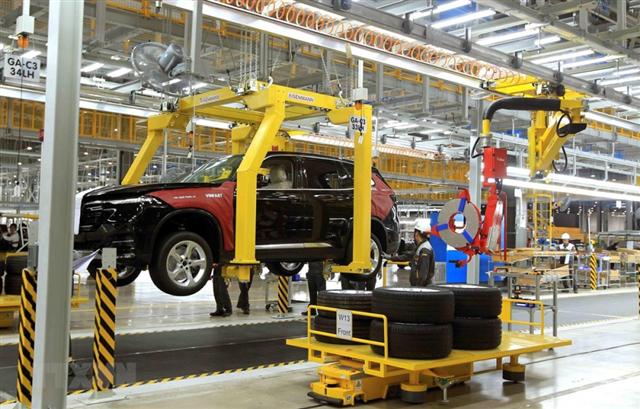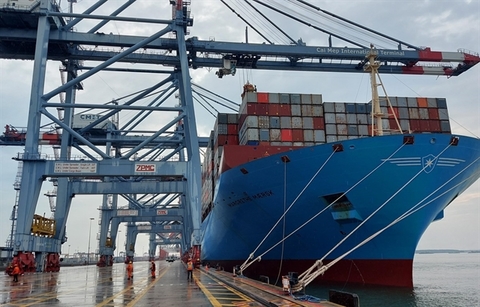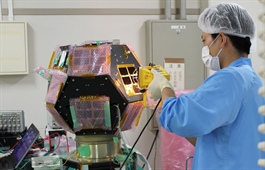Vietnam mulls solutions to boost added value of industrial production
Vietnam mulls solutions to boost added value of industrial production
Vietnam’s industrial sector has posted high growth rates in recent years, but the created value of this growth remains low. One solution under consideration is attracting investment shifts in manufacturing industries from China and other countries to Vietnam.

Automobile manufacturing and assembling is one of Vietnam’s prioritized industries
|
Weak internal industrial capacity
According to the Vietnam Industry Agency (VIA) under the Ministry of Industry and Trade (MoIT), the Covid-19 epidemic exposed the limitations of Vietnamese manufacturing industries, which are heavily dependent on foreign supply chains, mainly on imported components, accessories and raw materials. At the same time, the industrial share of the GDP amounts to about 18 percent, a low level compared with other countries in the region. In addition, the capacity and competitiveness of many industries are weak, as reflected in the small number of industrial enterprises - only 80,000 processing and manufacturing enterprises - and by limited financial capacity and technology.
The report shows that in 2019, Vietnam imported some US$40 billion worth of electronic components, including US$16.8 billion from the Republic of Korea (RoK), US$13.8 billion from China, and US$1.7 billion from Japan. The textile, garment and leather (shoes, bags) industries also imported US$2.47 billion of cotton, US$2.3 billion of fiber, US$12.69 billion of fabric and about US$5.61 billion of raw materials. The automobile manufacturing and assembling industry also imported nearly US$4 billion in spare parts, including US$0.7 billion from China, US$1.14 billion from the RoK, and US$0.72 billion from Japan.
VIA General Director Truong Thanh Hoai assessed that the trade deficit of inputs for production from China and other countries results in the very low added value of domestic industries, making them vulnerable to domestic and foreign political and socioeconomic changes. Data from the Organization for Economic Cooperation and Development (OECD) show that in the past five years, foreign countries, especially China and the RoK, still account for a large proportion of the value-added structure of Vietnam’s export products; the domestic value added ratio is still low and remains largely stagnant.
Vietnam’s two main export groups, textiles and electronics, have domestic value added ratios of just over 50 percent and 37 percent, respectively. “This fact not only affects production development and economic growth in the short term, but continues to affect Vietnam’s industries in particular and the country’s sustainable economic development in the long term,” Hoai said.
More preferential and support policies
The MoIT continues to effectively restructure the industry and trade sector, focusing on a number of major solutions to exploit the potential for higher added value. These include prioritizing industries with development opportunities such as automobile, textiles, footwear, electronics, minerals and supporting industries.
The MoIT is urging consistency in local and national industrial development plans, especially plans for supporting industries and some important basic materials industries, such as hot rolled steel, fabric production, dyed fabric, and new materials, reducing dependence on imports. Truong Thanh Hoai suggested that the state should adopt more preferential and support policies to attract investment shifts in manufacturing industries from China and other countries to Vietnam.
Under the government’s action plan on national industry development policies to 2030, with a vision to 2045, the industrial sector will account for over 40 percent of Vietnam’s gross domestic product (GDP) by 2030, with manufacturing and processing industries making up some 30 percent and manufacturing industry alone accounting for over 20 percent. The value proportion of high-tech products from processing and manufacturing industries will reach at least 45 percent. The average annual growth rate of industrial added value will exceed 8.5 percent.
| From now to 2030, Vietnam will prioritize the development of information technology, telecommunications, electronics; clean, renewable and smart energy; and processing and manufacturing industries for international-standard agricultural development. |
























